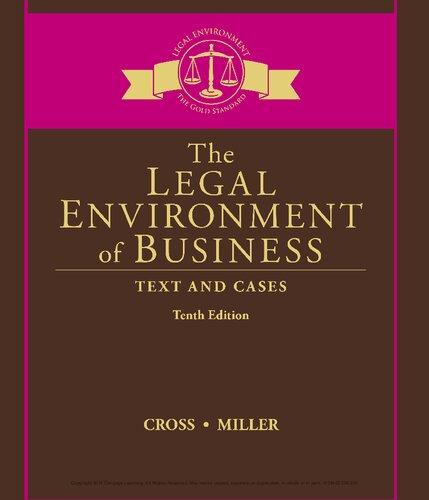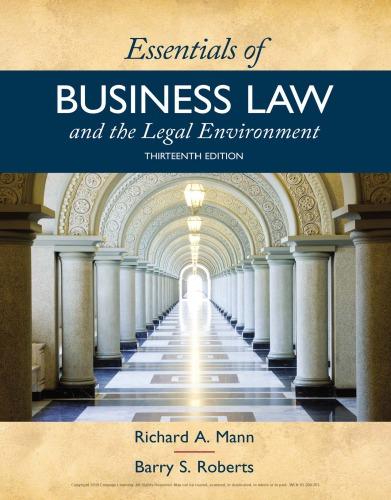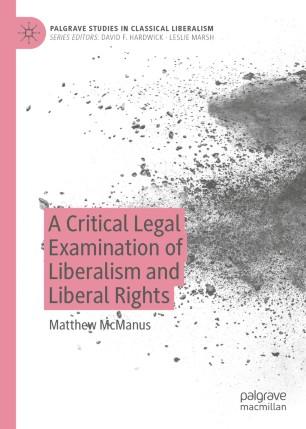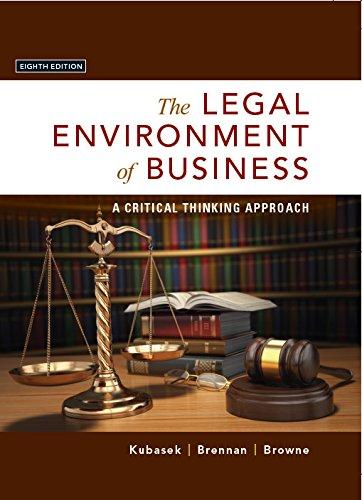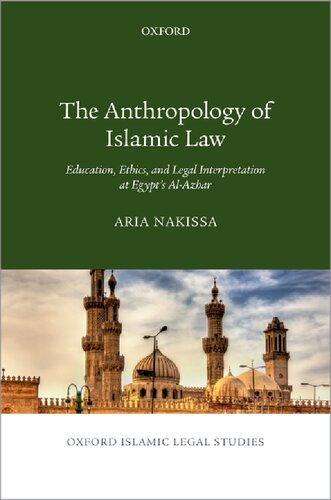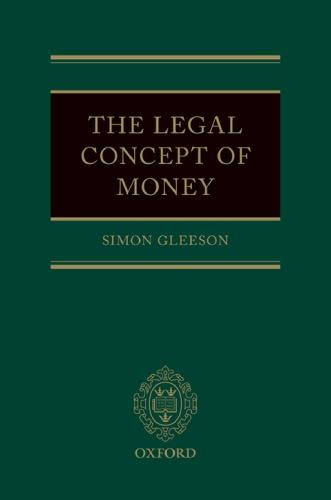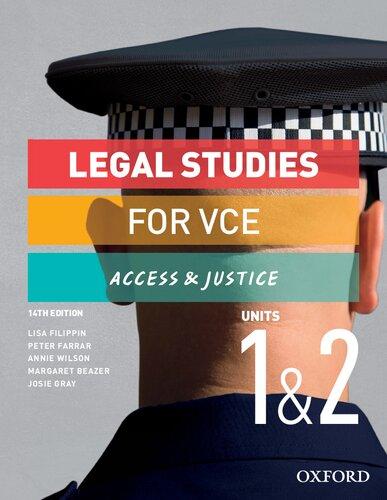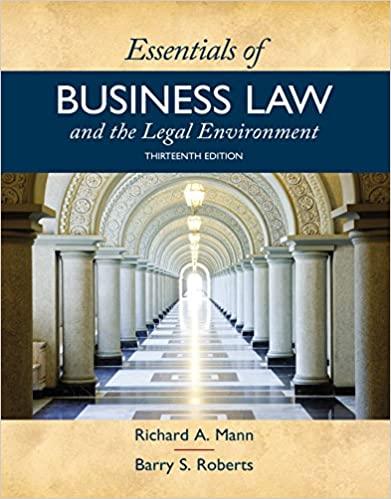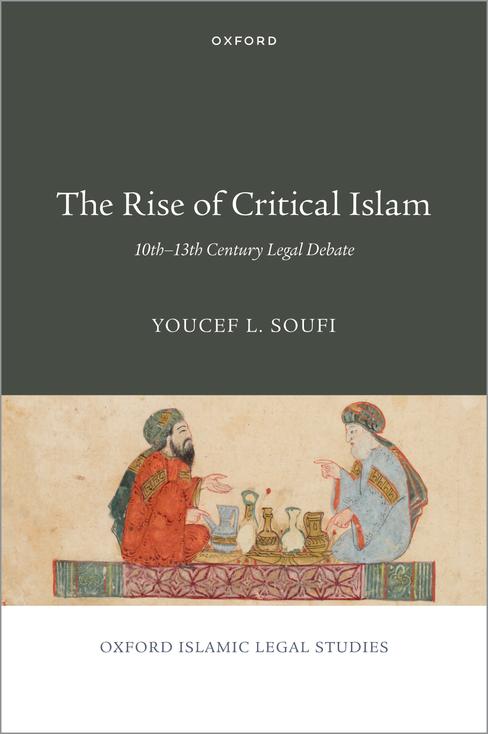The Rise of Critical Islam
10th–13th Century Legal Debate
YOUCEF L. SOUFI
University of Toronto
Oxford University Press is a department of the University of Oxford. It furthers the University’s objective of excellence in research, scholarship, and education by publishing worldwide. Oxford is a registered trade mark of Oxford University Press in the UK and certain other countries.
Published in the United States of America by Oxford University Press 198 Madison Avenue, New York, NY 10016, United States of America.
© Oxford University Press 2023
All rights reserved. No part of this publication may be reproduced, stored in a retrieval system, or transmitted, in any form or by any means, without the prior permission in writing of Oxford University Press, or as expressly permitted by law, by license, or under terms agreed with the appropriate reproduction rights organization. Inquiries concerning reproduction outside the scope of the above should be sent to the Rights Department, Oxford University Press, at the address above.
You must not circulate this work in any other form and you must impose this same condition on any acquirer.
CIP data is on file at the Library of Congress
ISBN 978–0–19–768500–6
DOI: 10.1093/oso/9780197685006.001.0001
Printed by Integrated Books International, United States of America
Note to Readers
This publication is designed to provide accurate and authoritative information in regard to the subject matter covered. It is based upon sources believed to be accurate and reliable and is intended to be current as of the time it was written. It is sold with the understanding that the publisher is not engaged in rendering legal, accounting, or other professional services. If legal advice or other expert assistance is required, the services of a competent professional person should be sought. Also, to confirm that the information has not been affected or changed by recent developments, traditional legal research techniques should be used, including checking primary sources where appropriate.
(Based on the Declaration of Principles jointly adopted by a Committee of the American Bar Association and a Committee of Publishers and Associations.)
You may order this or any other Oxford University Press publication by visiting the Oxford University Press website at www.oup.com.
Introduction: Islamic Law and/as Critique
PART I
1. Mourning Loss through Debate: Pious Critique and Its Limits 29
2. The Emergence of Pious Critique: A Genealogy of “Munāẓara” 51
3. “Why Do We Debate?”: Uncovering Two Discursive Foundations for Disputation
PART II
4. Debating the Convert’s Jizya: How the Madhhab Enabled Ijtihād
5. Forced Marriage in Shāfiʿī Law: Revisiting School Doctrine
6. The Mistaken Prayer Direction: Debating Indeterminate School Doctrine
PART III
7. The End of Critical Islam?: Shāfiʿism and Temporal Decay
Bibliography
Acknowledgements
I began writing this book in the summer of 2018. I spent my mornings outdoors on the campus of the University of British Columbia (UBC), sometimes in front of the ocean’s waves, sometimes a flower garden. The setting was peaceful. I was grateful. After cancer treatments the year before, I was grateful to God for giving me more time on this earth to discover, compose, and share ideas I thought important. I was grateful to the students at UBC who had supported me when I first became ill and had engaged with my ideas the year prior, in particular Zaid Salman, Alex Garcia, Hussain Khan, Noor Youssef, Rex Ng, and Moneeza Badat. My students taught me more than they knew: every listless expression in a class lecture, every confused question, and every engaged discussion became a means for me to rethink how, why, and what ideas I should present about the Islamic tradition. This book, I told myself, will be written for them, not only for the expert in Islamic law.
The writing of this book has been a long journey. Thank you to the many individuals who accompanied me along the way. There were those of you who shaped the ideas of this book from the very beginning, when it was still in dissertation form: Anver Emon, Amira Mittermaier, Mohammad Fadel, Sadaf Ahmed, Basit Iqbal, Jairan Gahan, and Khalidah Ali. You have continued to engage with the chapters in this book ever since. There were those of you who gave me insightful comments as I developed my ideas: Ahmed El Shamsy, Ayesha Chaudhry, Walid Saleh, Ruth Marshall, Ammar Khatib, Jeannie Miller, David Vishanoff, Rumee Ahmed, Aun Hasan Ali, Amal Ghazal, Derryl Maclean, Walter Young, Shahid Rahman, Omar Anchassi, Sohail Hanif, and Kamran Karimullah. There were those of you who made me rethink ijithād, munāẓara, and critique by engaging with my journal articles: David Powers, Joseph Lowry, Ovamir Anjum, Shuruq Naguib, and Peri Bearman. There were those of you who read and gave me your generous and perceptive comments on the most recent versions of the book: Junaid Quadri, Nada Moumtaz, Saadia Yacoob, Bilal Ibrahim, and James Tully. And there were those of you who have given me invaluable editorial support: Ghaith Qassas, Marya Atassi, Nathalie LaCoste, Philip
Sayers, Mohannad Abusarah, and the editorial team at Oxford University Press. I am also grateful to Eric Chaumont for his foundational scholarship on al-Shīrāzī and to Walter Young for having revived interest in the munāẓara in the last decade.
My journey included institutional support and intellectual comradery. Anver must be singled out for giving me the time and the institutional backing that enabled me to see this book to completion during a postdoc at the Institute of Islamic Studies (IIS). The support he continues to give to advancing junior scholars’ careers is inspirational. Thank you to my circle of academic friends in Vancouver: Seemi Ghazi, Itrath Syed, Faisal Nahri, Maged Senbel, and Çavlan Erengezgin; and to my colleagues at UBC, particularly Florence Yoon, Leanne Bablitz, and Sara Milstein. From 2019 to 2022, I have had the support of two wonderful academic teams: the University of Toronto’s IIS and the Canadian Association for the Study of Islam and Muslims (CASIM), whose members included Catherine Larouche, Sara Abdel-Latif, Madeleine Link, Maysa Haque, Sarah Shah, Moska Rokay, Joud Alkorani, Adil Mawani, Sara Hamed, and Zaid Khan. Even with COVID-19, the IIS and CASIM brought together an exceptional group of scholars willing to collaborate in furthering the study of Islam and Muslims. Thank you also to my academic mentors in my younger and more formative years, particularly Georges Vermette and Ravi Vaithees.
Finally, thank you to my family, both immediate and extended: the Denisets, the Soufis, and the Ahmeds. Thank you to my parents, Rachel Soufi (née Deniset) and Taïb Soufi, for their love and encouragement. My mother will always be my first and most important teacher of the humanities. Thank you to my siblings and especially Salah-Eddin for his kindness during my childhood and to Sofiya, who never fails to make me laugh even on the most difficult of days, for our discussions on Islamic law and for her rigorous editing work. Thank you to my wife’s parents, Shahida Ahmed and Naseer Ahmed, for their unwavering support throughout these years of book writing. Alongside Anver, they created the conditions that gave me time to write despite raising a young family.
Thank you to my big boy Abdullah and to my two little ones, Ayesha and Sana, for the light you bring to my days. I hope someday the contents of this book benefit you and the communities that you belong to. May you always stay kind, gracious, and thoughtful. Papa vous aime de tout son coeur.
Most of all, thank you to my partner, Sadaf Ahmed. Your impact on this book cannot be overestimated. More than anyone, you were the dialogical partner that made this book possible. At times, you have been my sāʾīl and at others my mujīb. Thank you for your patience, companionship, and love throughout our lives together.
Introduction
Islamic Law and/as Critique
“I just don’t understand how he wasn’t stoned,” Arsalan said, shaking his head. Our eyes had met moments before: he was smiling in disbelief. It was the winter term of 2017, during my first year teaching at the University of British Columbia. That day, our “Modern Islam” class was discussing the famous 19th-century Muslim Indian reformer Syed Ahmed Khan. Khan was a complex man and, in many ways, a controversial figure.1 His ideas were out of step with those of most Muslims, past and present, so I knew my students would likely be surprised to hear how Khan rejected miracles such as Mary’s virgin birth and affirmed that prophets like Muḥammad were nothing more than highly perceptive or intelligent men.2 There were puzzled expressions and eyes widened in surprise. It was then that I noticed Arsalan and Rod, seated beside each other, and their incredulous smiles. Arsalan saw me trying to decipher his reaction: “I just don’t understand how he wasn’t stoned.”
Though extreme, I knew where Arsalan’s comments were coming from. His generation lived in the shadow of three decades of violent episodes pitting Islam against freedom of expression—the Salman Rushdie Affair; the Danish Cartoons; and, most vividly in the minds of my young students, the Charlie Hebdo massacre a mere two years prior. Much of the public discourse in Canada and the West more generally saw Islam as intransigently opposing any and all forms of critical scrutiny. TV personalities like Bill Maher and Sam Harris put forward claims like “[Islam] is the only religion that acts like the mafia, that will fucking kill you if you say the wrong thing, draw the wrong picture, or write the wrong book.”3 As many have pointed out, these depictions of Islam are gross caricatures that reflect neither the reality nor the complexity of the Muslim world. They draw upon centuries-old stereotypes that position the Orient and Muslims as irrational and authoritarian. Measured analyses of the Satanic Verses and Danish Cartoons affairs have highlighted the breadth of issues far beyond religious dogmatism—immigration and discontent at the US War on Terror, for example—that fuelled the turmoil of these episodes.4
The Rise of Critical Islam. Youcef L. Soufi, Oxford University Press. © Oxford University Press 2023. DOI: 10.1093/oso/9780197685006.003.0001
Still, Arsalan’s impression of Islam was grounded in more than a mere Western historical bias. He himself came from an Iranian Muslim background: his family had fled Iran’s theocratic state and had seen firsthand how men of religion could repress dissenting voices. In fact, many Muslim students in the classroom had similarly witnessed harsh consequences for those who expressed what the Muslim masses or religious authorities in their countries of origin deemed injurious or heretical speech. Those of Pakistani origin, for instance, could point to their country’s death penalty for transgressing blasphemy laws.5 In short, many Muslims in my class felt that contemporary Islam lacked a critical ethos. I have some sympathy with this view. And what I’ve found especially disheartening is that the violent and dogmatic Muslim fringe does not monopolize this lack of openness to debate. It is also found among the moderate mainstream tradition that celebrates tolerance and pluralism. Take, for instance, the prophetic ḥadīth (tradition) in which Muḥammad states, “I promise a house in paradise to the one who leaves debate, even if he/she is correct.”6 I have often heard this ḥadīth quoted in Friday sermons and have seldom met a mosque-attending Muslim who has not. It is usually cited in a sincere attempt to foster harmony and brotherly and sisterly bonds between believers. Mosque leaders presuppose that debate leads to bruised egos and conflict, and that keeping the peace necessitates swallowing one’s tongue. But there is something troubling about the prevalence of debate’s condemnation. Aren’t there times when debate is needed? If so, should mosque preachers not be encouraging it? And has it always been this way?
It was a couple of years before the conversation with Arsalan—at a Friday sermon in 2015—that I began to reflect upon the ruptures in the history of Muslim attitudes towards critique. I was attending a sermon at Hart House in the University of Toronto delivered by a well-respected and well-known Toronto imam. The sermon was commonplace, but something caught my attention. My eyebrows furrowed when I heard the imam state that “the great scholars of Islam accepted ikhtilāf but not khilāf.” Many in attendance recognized the statement as witty wordplay: both Arabic words share the same root kh-l-f, but whereas ikhtilāf refers simply to a difference of opinion, khilāf connotes conflict or dissension. The point the imam was trying to make was an important one in this day and age: he sought to convey that religious disagreement and pluralism was a normal part of Islamic thought. The salience of this idea was all the more pronounced
at a moment when ISIS’s violently dogmatic understanding of Islam was permeating newscasts. The message was dear to this particular imam’s heart too, for he had long advocated the condemnation of violence and bigotry, leading the charge in 2007, when over thirty Canadian imams signed a statement denouncing religiously motivated violence.7 The imam’s point was that divergent ideas should not lead to communal turmoil. Though newly urgent, the message was one the audience was familiar with. Virtually any Muslim hears over the course of their life the well-known prophetic statement “al-ikhtilāf raḥma” (differences of opinion are a divine mercy).8 The message also fits well with modern secular liberal sensibilities that view religious choice as a deeply personal and relative matter. And yet there was something about the statement that struck and stayed with me, and it was not its wordplay.
Being at the tail end of my PhD in classical Islamic law, I knew that the terms ikhtilāf and khilāf were in fact synonyms in the legal vocabulary of a millennium ago.9 The mistake bothered me: not so much the simple linguistic error, but rather what this historical erasure implied. The statement showed an inability to appreciate what classical Islamic scholars knew at their very core: namely, that different opinions only deserved respect if those opinions had passed through the crucible of debate. Ideas, these jurists knew, needed conflict or khilāf. They needed to be tested—in short, to be engaged with critically. To say that the great scholars of Islam did not accept khilāf, then, was to miss the fact that respect and pluralism in the world of juristic Islam was something that was earned. Yet the imam was neither the first nor the last to aver that the scholars of Islam accepted ikhtilāf but not khilāf. 10 That afternoon, as I looked at the opulent, old, wood-panelled structure of Hart House’s Great Hall, I pondered the difference between Islamic legal discourse today and during the centuries-ago era I was studying. While pluralism remains a widely embraced good, critique is far less so. More still, I marvelled at how few Muslims were aware of this historical shift.
This book uncovers an Islam that departs from the one featured in media coverage and mosque discourse. It is an Islam that has the potential both to humble advocates of secular reason as a panacea to religious extremism and to uncover for today’s diverse range of Muslims the personal quest to understand God’s law that animated their legal tradition and made critical debate a revered and pervasive historical practice.
The Munāẓara: Unearthing a Culture of Critique, Ijtihād, and Uncertainty
The culture of critique that I examine in this book took shape among Sunni Muslim jurists (fuqahāʾ) in Iraq at the dawn of the 10th century ce.11 It then quickly spread to Persian lands, including Khurasan and Central Asia. The primary vocation of these jurists was the study of God’s revealed law (alsharʿ or al-sharīʿ a). They trained in legal schools where they were exposed to a series of standard contested questions (masāʾil al-khilāf) that had divided the legal community over generations.12 As they acquired the skills to assess the merits of each side of these debates, they were tasked with determining which position was most well founded and why. In doing so, they critically engaged with the views of their predecessors and their peers. This process of critique was understood as a pious pursuit that partook in the task of searching for God’s law. Importantly, though, the contested questions were never settled. Nor were they expected to be. It was deemed sufficient that each jurist should come to his own conclusions on the law.13 A jurist’s evaluation of legal arguments made it possible for him to counsel lay Muslims seeking guidance on how to live by God’s commands.14 A jurist was therefore a legislator of sorts, at least for himself and for those who petitioned him.
Jurists’ high regard for critique rested upon two other widely held commitments. First was the obligation of ijtihād (the jurist’s effort in searching for God’s law). With few exceptions, jurists of this era barred those with legal training from “subscribing to a legal position without evidence” (known in Arabic as taqlīd).15 As we shall see, the stakes were high: a jurist’s afterlife depended upon the process of finding evidence for his positions.16 Thus, this classical legal culture was concerned with evidence and justification above all else. Second, jurists saw God’s law as largely uncertain.17 Though God had commanded Muslims to base their legal positions on evidence, he had provided them with very little in the way of clear-cut confirmations. For the vast majority of legal questions, then, a jurist could not definitively claim the correctness of his positions. He could only claim to have examined the law to a degree sufficient to overcome his initial presumptions. Certainty remained out of reach—and this meant acknowledging the possibility of being wrong. More importantly, it meant acknowledging that an opposing jurist might be right. In a legal system in which each jurist must know the evidence justifying a law but no jurist can be certain of what that law truly is, critique comes to hold a place of prime importance.18 Only through the clashing of
ideas could a jurist come to a stronger—though ultimately still uncertain— understanding of the law. Thus, while I call the classical juristic community a culture of critique, it was so because it was a culture of ijtihād and a culture of legal uncertainty. All three aspects of this culture—ijtihād, uncertainty, and critique—were intertwined, and their analysis serves to explain today what was distinct about this era in Islamic legal history.
To analyze this culture of critique, my study focuses on a particular juristic practice: the disputation (munāẓara), also known as “the debate gathering” (majlis al-naẓar). Although classical legal critique took different forms, including books featuring lengthy arguments against their authors’ detractors, the disputation placed critique in the limelight for all jurists—and now the historian—to see. The disputation brought jurists together for the express purpose of sustained critical examination of the law. Each session would feature two jurists taking opposite roles on a contested legal question, often before an audience of fellow jurists. One jurist was labelled the questioner (alsāʾil) and was charged with asking his opponent, the respondent (al-mujīb), his position on a contested question.19 After learning of the respondent’s position, the questioner was tasked with raising objections, which the respondent in turn sought to address and overcome. The exchange was to be thorough, detailed, and ruthless. While proper decorum and mutual respect were expected, objections were to be as devastating to the questioner’s evidence as possible. Through the exchange, the jurists came to verify sound arguments and discredit false ones.20 The disputation furthered the jurists’ search for God’s elusive law. For this reason, disputations were a pervasive practice in Iraq and Persia up until the 13th century. They took place in mosques, homes, and rulers’ courts.21 And though they were often regularly scheduled and mundane affairs,22 disputations were also held in conjunction with important events in the life of the legal community: the visit of a prominent scholar, the appointment of a new professor, or even the funeral of a loved one. They peppered the landscape of juristic life. In the pages that follow, the practice of disputation is the key mechanism through which I examine the role of critique from the 10th to the 13th centuries.
The prominence of disputation within the classical juristic community is well known. George Makdisi placed the disputation at the heart of his analysis of 11th-century legal colleges. He saw disputation as a pedagogical means of training aspiring jurists and a method for establishing hierarchies within the ranks of a legal school.23 In the last decade, a number of important studies have examined aspects of the disputation by turning to books of
jadal (dialectic): a literary genre through which jurists helped prepare their students for disputations.24 Books of jadal dedicate most of their page count to the categorization of arguments and objections that a jurist might deploy to defend his position; a few other passages present the sequence and ethics of the disputation. Studies of jadal, while immensely important, have focused on understanding the science of dialectical argumentation among Muslims, remaining largely silent on the social dimension of the disputation. To take an analogy, one can study Aristotle’s logic as a science concerned with making claims about correct reasoning, but one can also ask how Aristotle taught logic in his Lyceum, how his teaching shaped his Greek students’ practice of philosophy, and what impact it had on Greek society. To ask about the social dimension of the disputation, then, is to recognize it as an act taking place in a context, performed by humans with complex motives, and having farreaching consequences on other humans living in the same time and place. For such an understanding of the disputation, Makdisi’s research remains our best source.
My aim is to revise and extend Makdisi’s analysis by studying different aspects of the disputation. A specific set of questions animate my study: How did the disputation emerge? How did jurists justify the practice? What were the limits to their critical aspirations? What impact did disputations have on a jurist’s substantive legal thought? How did the legal school a jurist belonged to shape the content and conduct of his disputations? And how in turn did disputations shape the historical evolution of a school’s substantive law? Finally, why did disputations wane in prominence around the 13th century? To answer these questions, I treat the literature of the juristic community as an archive that opens a window onto this community’s values, disagreements, and practices. This literature includes texts of legal theory, substantive law, historiography, biographical dictionaries, and transcripts of past disputations.
Among my conclusions is that the classical culture’s commitment to critique produced the argumentative complexity that other historians have recognized when studying jurists’ manuals of substantive law.25 The complexity of the law was the product of generations critically revisiting, evaluating, refining, and adding their own perspectives to standard legal questions. Over time, the number of arguments supporting different sides of a debate multiplied; so too did the objections. We can gain some semblance of this complexity by examining the large manuals of substantive law which today take up bookshelves in their multi-volume print editions.
Manuals such as Abū Bakr al-Jaṣṣāṣ’s (d. 370/980 ce) Sharḥ Mukhtaṣar alṬaḥāwī, Abū al-Ṭayyib al-Ṭabarī’s (d. 450/1058 ce) al-Taʿlīqa al-Kubrā, and Abū al-Ḥasan al-Māwardī’s (d. 450/1058 ce) al-Ḥāwī al-Kabīr list the many arguments and objections that jurists posited in defending their positions.26 But even the manuals that provide the most elaborate expositions of a legal question present arguments in a much more cursory manner than do jurists engaged in disputations. Indeed, these manuals offer only summary records of the more complex oral examination of the law, the traces of which we can locate in our few extant transcripts of disputations.
But while I emphasize the admirable argumentative complexity produced by classical disputation culture, I also argue that the critical aspirations of jurists were undercut by their exclusivism. The perspectives of groups who were either largely or completely excluded from the juristic community (such as slaves and women) were not heard in this culture of critique. As we shall see through the example of women, the wants, desires, and needs of excluded groups were not disqualified from the debate gathering so much as they were presumed. As a result, the search for God’s law sometimes depended on unsubstantiated claims about what would be good for those not party to the discussion.
The Shaykh Abū Isḥāq and His Disputations
At the heart of this study is the Shaykh Abū Isḥāq, as his contemporaries and later jurists of his Shāfiʿī school affectionately and reverentially called him. His full name was Abū Isḥāq Ibrāhīm b. Yaʿqūb al-Fīrūzābādī al-Shīrāzī. I refer to him as al-Shīrāzī throughout these pages in accordance with contemporary academic conventions.27 The author of numerous canonical Shāfiʿī books, al- Shīrāzī was born in 1003 ce in the small town of Firuzabad and held the most prestigious professorial position in the Muslim world at the time of his death in 1083 ce . 28 His renown led to the preservation of his copious writings, and most are available today in critical print editions. During his life, al- Shīrāzī’s contemporaries most admired him for his unparalleled debating prowess; he was considered a “lion in disputation.”29 Centuries later, the great biographer of the Shāfiʿīs, Tāj al-Dīn al-Subkī (d. 771/1370 ce), would affirm that some rivalled al-Shīrāzī’s knowledge of the law but none equalled him in debating contentious legal questions.30 AlShīrāzī’s skill in disputation even found itself immortalized in poetry: the
poet al-ʿUqaylī uses “Abū Isḥāq’s tongue in the debate gathering” (lisān Abī Isḥāq fī majlis al-naẓar) as the vehicle of a simile for eloquence.31 Al-Shīrāzī’s life, his writings, and the transcripts of his disputations are the foundation of my analysis of the disputation in the classical era.
Methodologically, the focus on al-Shīrāzī has its virtues. Al-Shīrāzī was a prominent scholar, sought after by students eager to train with him, lay Muslims who requested his fatwās, and rulers who respected his learning. We know that he taught not only Shāfiʿī jurists but also famous Ḥanbalīs and Mālikīs. As such, his writings not only shaped his juristic community across school lines but also accounted for its disagreements. Al-Shīrāzī’s centrality to the classical legal community and his proficiency in disputation make him a privileged source in seeking to understand this community’s practice of disputation. We can get a sense of al-Shīrāzī’s place within his legal community by briefly examining his training and rise within the ranks of the Shāfiʿī school.
Al-Shīrāzī’s ascent to prominence was gradual. He likely came from humble origins: he had no prestigious lineage or wealth to boast about.32 In fact, he would struggle financially his entire life. Even into adulthood, he would often visit a generous acquaintance among the marketplace greengrocers to receive food donations. Biographers note that he was too poor to afford the mount needed to make the pilgrimage to Mecca. However, poverty never discouraged al-Shīrāzī from his educational pursuits. He began studying at a young age in his native Firuzabad with a man named Abū ʿAbd Allāh Muḥammad b. ʿUmar al-Shīrāzī.33 Firuzabad was a small provincial town in the province of Fars in Central Persia that benefitted from fertile land and a temperate climate. Its people had a reputation for piety and were known for their honesty—qualities al-Shīrāzī appears to have exemplified his entire life.34 Al-Shīrāzī then relocated to Shiraz where he studied under the guidance of a better-known scholar, Abū Aḥmad al-Ghandajānī.35 It was from his relatively short time in Shiraz that he would later earn the misleading title al-Shīrāzī (the one from Shiraz). Still at a young age, al-Shīrāzī engaged in disputations with members of other schools; he tells us that he frequently debated the Ẓāhirī judge alQāḍī Abū al-Faraj al-Shīrāzī.36
It would not be long before al-Shīrāzī moved again, first to Basra and then to Baghdad in 1024 ce.37 For over two centuries, Baghdad had been the centre of Shāfiʿī thought.38 Jurists from far and wide travelled there to imbibe knowledge from the city’s learned class.39 Unlike Shiraz, Baghdad
was a predominantly Arab-speaking land. As a twenty-one-year-old Persian, al-Shīrāzī likely experienced the disorientation foreign travellers feel when entering a new cultural-linguistic space. Nonetheless, his prior study of the Arabic language would have facilitated the transition. Arabic was the shared scholarly language of the 11th-century Muslim world, and many of the great Iraqi scholars either were born in Persian lands or were of Persian stock. The names of historical Iraqi Shāfiʿī leaders collectively provide a lesson in Persian geography—al-Ṭabarī, al-Isfarāyinī, al-Māwardī, al-Shāshī, alMarwarrūdhī, al-Marwazī, and so on.40 The ṭullāb al-ʿilm (seekers of knowledge) of Baghdad came from a diverse geographical background. Later in life, al-Shīrāzī would attract students from all over the Muslim world seeking to study with him. On one memorable occasion, a prospective student came to introduce himself to the Shāfiʿī master. Al-Shīrāzī inquired about his origins: “Where are you from?” The young man answered, “From Mosul.” To this, al-Shīrāzī cheerfully responded, “Welcome, my fellow countryman.” The puzzled man pointed out to al-Shīrāzī the obvious fact that Mosul is nowhere near Shiraz. Al-Shīrāzī slyly answered, “Yes, but did we not all descend from Noah’s boat?”41 The anecdote conveys more than al-Shīrāzī’s playful sense of humour; it highlights the cosmopolitanism and solidarity of the juristic community.
In Baghdad, al-Shīrāzī attended the lectures of the leading Shāfiʿī professor, a scholar by the name of Abū Ḥāmid al-Isfarāyinī (d. 418/1027 ce). Al-Shīrāzī likely hoped that the famed teacher would take him on as fellow (ṣāḥib)—a position equivalent to the modern-day graduate student. It would not be. A few years after al-Shīrāzī’s arrival, al-Isfarāyīnī passed away, and al-Shīrāzī found his way to a lesser-known scholar who would take the mantle of the Shāfiʿī leadership after al-Isfarāyinī’s death. This teacher, Abū al-Ṭayyib al-Ṭabarī, was already quite elderly, and had spent years in study in different regions of Persia before settling down in Baghdad. More than anyone else, al-Ṭabarī would become al-Shīrāzī’s scholarly mentor. Al-Shīrāzī would speak highly of his master’s sharp mind.42 As al-Shīrāzī continued to distinguish himself, al-Ṭabarī made him his teaching assistant, giving him the title of “class repetitor” ( mu ʿīd). The position must have provided al-Shīrāzī with a welcomed if modest income. In time, al-Ṭabarī would permit al-Shīrāzī to teach his own lessons within al-Ṭabarī’s mosque. Al-Shīrāzī would eventually move on to teach in the mosque of the wealthy Bāb al-Marātib neighbourhood by the Tāj Palace.
Al-Shīrāzī’s academic success depended less on his natural intelligence and more on his unmatched work ethic. Fellow students would express surprise at his ability to study continuously for long periods. They even worried that his body might not tolerate the stress he put it through. However, al-Shīrāzī was not without rivals. Abū Naṣr b. al-Ṣabbāgh (d. 477/1085 ce) was another of al-Ṭabarī’s star students and in many ways possessed all the resources al-Shīrāzī lacked.43 Ibn al-Ṣabbāgh was a native of Baghdad and came from a family of prominent jurists. This might partly explain why the two men seemed to dislike each other. It is said that Ibn al-Ṣabbāgh insulted al-Shīrāzī’s knowledge of Shāfiʿī substantive law, prompting al-Shīrāzī to write his opus al-Muhadhdhab (The Refinement of Shāfiʿī Doctrine). When al-Ṭabarī passed away, the two younger men were considered the highest authorities on Shāfiʿī law in Baghdad.44
Ultimately, it was political fortune that would change the fate of an aging al-Shīrāzī and raise him to prominence over Ibn al-Ṣabbāgh. In the mid-11th century, the Seljuk Turks swept through the Eastern lands of Islam and took control of Iraq.45 The Seljuk wazir, Niẓām al-Mulk, was a cunning administrator who recognized the value in courting the scholarly Muslim class of the empire.46 He decided in 1065 to erect the Baghdad Niẓāmiyya, the most splendid college in his empire, and to appoint al-Shīrāzī to its professorial chair when it opened the following year. The college greatly amplified alShīrāzī’s fame. Henceforth, students would flock from everywhere to study under his guidance.47 It also increased al-Shīrāzī’s political clout: state rulers consulted al-Shīrāzī as a foremost representative of the learned community of Baghdad.48
In 475/1083 ce, al-Shīrāzī undertook a political mission for the caliph to Khurasan, in northeastern Persia. The caliph had had a spat with one of his governors and wished to send word of it to the sultan and wazir, camped with their armies in Khurasan. He entrusted al-Shīrāzī with the task of delivering his letter.49 When al-Shīrāzī arrived in the Khurasanian city of Nishapur, an intellectual hub rivalling Baghdad for primacy in Shāfiʿī thought, the towering jurist Abū al-Maʿālī al-Juwaynī (d. 478/1085 ce) greeted and hosted his travel party.50 The two were old friends:51 Al-Juwaynī had sought refuge in Baghdad decades earlier, when the political leadership of his city was subjecting him and other Shāfiʿīs to persecution for their adherence to Ashʿarī theology. Al-Shīrāzī was still an aspiring student when they had met, and the pair would participate in disputations together.52 How times had changed. Al-Juwaynī’s exile provided him with a newfound reputation among the
international Shāfiʿī community. His time in the Hijaz region would grant him his enduring nickname, Imām al-Ḥaramayn (the Imam of the two sanctuaries of Mecca and Medina). When Niẓām al-Mulk had become wazir of Khurasan, al-Juwaynī was invited not only to return to his native city but to do so in triumphant fashion. Before the Niẓāmiyya of Baghdad, the wazir had built the first Niẓāmiyya College in Nishapur; al-Juwaynī was appointed its professor in 1058 ce. Both men were therefore at the top of the academic ladder when they reunited. With Niẓām al-Mulk in attendance, the two of them squared off for a series of disputations.
These debates between the two towering figures of the juristic community would prove to be among al-Shīrāzī’s last: he passed away later that year. The academic and political community of Baghdad mourned the passing of one of its greatest thinkers. The caliph prayed over al-Shīrāzī’s body, after which he was interred in the Abraz cemetery, a site that would become a wellknown shrine for centuries to come.53
In short, then, al-Shīrāzī’s eighty-year life offers us a lens into the career and social context of arguably the most influential professor in the most prestigious college in the most erudite city of the Muslim world. But there are two additional methodological virtues to placing al-Shīrāzī at the heart of a study on classical disputation. First, al-Shīrāzī has left us extant texts in every field of the Islamic legal sciences (usually more than one): we have detailed access to al-Shīrāzī’s thought in legal theory, substantive law, and dialectic,54 as well as his biographical dictionary of jurists (which sheds light on how he understood the historical evolution and makeup of Sunni legal schools),55 a short statement of creed, and a manuscript on disagreement (khilāf) between the Shāfiʿīs and the Ḥanafīs.56 I use these texts to highlight different aspects of the disputation. For instance, al-Shīrāzī’s legal theory text Sharḥ al-Lumaʿ explains the importance of disputation to a jurist’s process of ijtihād, while his substantive law manuals shed light on the contested legal issues that alShīrāzī debated in disputations.
Second, we possess four transcripts of al-Shīrāzī’s disputations. This is a rarity because disputations were seldom written down. The reasons are twofold: first, the exploratory nature of disputations meant that they did not always represent a jurist’s final position on a matter; and, second, disputations lacked the concision needed for teaching students the lengthy and varied evidence relevant to contested legal questions. Thus, disputations were usually strictly oral affairs, and while jurists in attendance sometimes sought to memorize what they had heard, these oral transmissions have not often
reached us. Al-Shīrāzī’s four disputation transcripts offer us a rare opportunity to examine the arguments and settings of historical disputations. I use each of these transcripts as the central piece of analysis in four chapters of this book. Each disputation sheds light on a different aspect of al-Shīrāzī’s classical culture of critique.
Two of al-Shīrāzī’s disputations took place between 1038 and 1041 ce in Baghdad.57 Both saw al-Shīrāzī debating a prominent jurist from the opposing Ḥanafī legal school named Abū ʿAbd Allāh al-Dāmaghānī (d. 478/ 1085 ce).58 Al-Dāmaghānī would later become head judge of Baghdad. One of the disputations tackles a question of marriage law: whether a wife has the right to file for divorce if her husband struggles to provide her financial maintenance.59 The second examines whether a new convert to Islam must pay the jizya (a poll-tax for non-Muslims) that accrued before his conversion.60 The two other disputations see al-Shīrāzī debating al-Juwaynī in 1083 during his travel to Nishapur. The first of this second pair of disputations asks whether a father can force his adult virgin daughter into an unwanted marriage.61 The second concerns a question of ritual law: Is it necessary to repeat one’s prayer when one knows with certainty that one has prayed in the wrong direction?62
All four of al-Shīrāzī’s disputation transcripts are found in Tāj al-Dīn al-Subkī’s Ṭabaqāt al-Shāfiʿiyya al-Kubrā. The three centuries that divide al-Shīrāzī and al-Subkī raise the question of historical authenticity. But there is compelling reason to believe that the events depicted in the disputation transcripts did take place. A closer examination of al-Subkī’s sources show why. Al-Subkī notes that the Mālikī jurist Abū al-Walīd al-Bājī (d. 474/1081 ce) transmitted at least one of al-Shīrāzī’s disputations with Abū ʿAbd Allāh al-Dāmaghānī.63 (Al-Subkī never explicitly tells his reader that al-Bājī also transmitted the second, though this is likely since the two disputations follow each other in al-Subkī’s text.) That al-Bājī transcribed the disputations accords with what we know of his biography. First, al-Bājī travelled to Baghdad to study with its jurists, including al-Shīrāzī, and he took an interest in disputation. Second, al-Bājī’s lost book Firaq al-Fuqahāʾ allegedly recorded disputations.64 Third, al-Bājī’s travels took place when alShīrāzī was still in the shadow of his master al-Ṭabarī, a fact attested to in al-Subkī’s transcription of al-Shīrāzī’s disputation with al-Dāmaghānī.65 The transmission of al-Shīrāzī’s two disputations with al-Juwaynī is also plausible. Al-Subkī notes that al-Shīrāzī himself recorded his disputations with al-Juwaynī. They were then transcribed by one of al-Shīrāzī’s students, and
eventually a transcription found its way into the hands of the Damascene scholar Ibn al-Ṣalāḥ (d. 643/1245 ce).66 Other sources corroborate that al-Shīrāzī travelled to Nishapur where he was hosted by and debated with al-Juwaynī.67 Considering al-Shīrāzī’s intense passion for the art of disputation, we can understand his desire to put his disputation with the formidable al-Juwaynī on paper.68 Nonetheless, our four transcripts cannot be taken as verbatim recordings. For one, al-Bājī explains that those who heard al-Shīrāzī and al-Dāmaghānī sought to memorize the disputation rather than record it in writing. It is therefore plausible that al-Bājī wrote down the disputations he witnessed some time after they took place, perhaps only on his return to his native Andalusia. For another, al-Shīrāzī could not have written down his disputations with al-Juwaynī while engaged in them:69 he would have therefore written them down sometime after his meeting with al-Juwaynī and before his death later the same year. What we have, then, are likely four reconstructions of disputations relying on human memory and transcribed sometime after their occurrence. While imperfect, though, alSubkī’s transcriptions, coupled with the many legal and historiographical texts of this era, offer us valuable resources in understanding the practice of disputation.
Despite the methodological virtues of focusing on al-Shīrāzī, we must take note of one peril of my method. The focus on al-Shīrāzī in a study that grapples with a culture that spans three centuries and covers the geography of Iraq and Persianate lands risks erasing what was unique about jurists of different times and locales. Put otherwise, there is a risk of assimilating the contexts and ideas of other jurists to those of al-Shīrāzī. To mitigate this risk, I make wide use of other jurists’ writings throughout my study. I cautiously extend my conclusions about the culture of critical Islam to other jurists, and I make explicit the divergences between jurists, both within and between legal schools. Still, the focus on al-Shīrāzī means that this study is only a partial view of classical Islam. I grant al-Shīrāzī’s Shāfiʿī school more attention than other legal schools. Likewise, I focus on Iraq more than other centres of learning such as Nishapur. The 11th century is also more prominent than other time periods in my study. This is not to say that my claims about the culture of classical Islam are wrongheaded or overstated. But it is important to foreground how my interpretation, like all interpretation, is mediated by my sources. In the end, I see classical Islam and the role of disputation within it largely through the eyes of al-Shīrāzī. My aim is to help my reader do the same.
Reimagining Ijtihād through the Lens of the Disputation
I have noted that the disputation was deeply intertwined with ijtihād in alShīrāzī’s classical culture. But I want to suggest that this intertwinement offers us a means to think differently about ijtihād. In particular, I seek to amend two core assumptions in the scholarship on ijtihād. The first pertains to how scholars understand the practice and function of ijtihād in the classical period. The second relates to accounts of why the obligation of ijtihād waned and gave way to a general acceptance of taqlīd in the 13th century. To understand these assumptions, we would do well to review the debate around the closing of the gates of ijtihād. I present the debate here in cursory form, pointing out four significant shifts in scholarly positions over the last sixty years.
A typical starting point for the debate is Joseph Schacht’s 1961 Introduction to Islamic Law 70 Schacht argued that the beginning of the 10th century marked a period in which Muslim jurists no longer exercised ijtihād 71 By this, Schacht meant that jurists no longer saw each other as possessing the freedom of “independent reasoning” on the law.72 Instead, their legal positions were bound by taqlīd, which he translated as “unquestioning following of the doctrines of established legal schools and authorities.”73 Schacht noted that mujtahids of lesser ranks continued for some centuries afterwards and that creativity among jurists continued to manifest both in stabilizing school doctrine and in fatwās to lay-Muslim petitioners. Still, according to Schacht, a general attitude set in among jurists that all the important questions had been tackled by their predecessors and that they should defer to them rather than think for themselves. Scholarship in the next two decades often echoed Schacht’s assessment, though not without some dissenters.74
Wael Hallaq’s 1984 article “Was the Gate of Ijtihād Closed?” renewed scholarly interest in understanding the history of ijtihād. Hallaq cast doubt on the thesis that ijtihād had come to a close, making three particular claims. First, there was no consensus among jurists over the closing of the gates of ijtihād. Second, some jurists throughout Islamic history continued to claim the status of mujtahid (one who performs ijtihād).75 Third, jurists continued to perform ijtihād after the formation of legal schools. Hallaq positioned himself as attacking a long-held dogma in the field, though his claims were less devastating to Schacht’s thesis than he made them out to be. For instance, Hallaq acknowledged that by the 11th century, jurists were rarely considered
“independent mujtahids (mujtahid muṭlaq),” distinguished by their capacity to establish their own legal schools.76 Thus, Hallaq recognized something of the shift that Schacht was gesturing towards. But Hallaq’s contribution was nonetheless valuable in pushing back against an Orientalist view that saw Muslim thought as having stagnated.77 By claiming on the contrary that ijtihād had never ended, Hallaq critiqued the idea that Muslims ceased creatively engaging with the law. Indeed, Hallaq largely used the term ijtihād as shorthand for “creativity,” “innovation,” or “originality.”78 Such a use of the term ijtihād overlaps with modern Arab reformist thought, which spoke of ijtihād as a means to break free from the authority of schools of law by returning to scripture and coming up with new legal solutions.79
In the 1990s, fresh scholarship recognized that Hallaq had been too strong in his claims and attempted to posit a middle ground between Schacht and Hallaq. Sherman Jackson concurred with Hallaq that some scholars continued to perform ijtihād, but nonetheless argued that a qualitative shift occurred towards a regime of taqlīd. Jackson associated this shift with what he called the stabilization of the legal schools (istiqrār almadhāhib) in the late 11th century.80 He characterized the regime of taqlīd in terms of Sunni jurists’ deference to the opinions of their legal school (madhhab). Jackson deemed “ijtihād proper” to have ended, since jurists no longer engaged in “the interpretation of scripture directly with no intermediate authorities standing between the sources and the individual jurists.”81 But he also claimed that taqlīd did not signal intellectual stagnation. Rather, taqlīd was about upholding the authority of the law by tracing its origins to the labours of past jurists, and it did not prevent Muslim jurists from innovating or bringing changes to the law when social need dictated that they should. Jackson famously used the term “legal scaffolding,” borrowed from the American legal theorist Alan Watson, to designate a mode of engagement with the law where changes are made piecemeal, leaving the authority of the legal school unaffected.82 Mohammad Fadel added to the debate, noting that taqlīd provided predictability to litigants about court rulings. Fadel contended that the move to taqlīd was therefore a triumph of “the rule of law” over a legal system that privileged the “personal discretion” of jurists.83 Thus, for both Jackson and Fadel, taqlīd was no longer a dirty word casting Muslim legal thought in a negative light. If anything, the emergence of a regime of taqlīd was a sign of Islamic legal thought’s success in previous centuries in developing laws to serve society. In short, taqlīd signalled the maturity of Islamic legal thought.
Following Schacht, Hallaq, and the 1990s defence of taqlīd, the fourth development I wish to draw attention to can be traced to Ahmed El Shamsy’s 2008 article “Rethinking ‘Taqlīd’ in the Early Shāfiʿī School.”84 El Shamsy pointed out that the fundamental problem with the scholarship on ijtihād and taqlīd is that scholars have tended to posit their own definitions for these terms rather than to examine how jurists themselves understood them. El Shamsy thus drew our attention to jurists’ self-understandings of their practice of taqlīd and ijtihād. He showed that Shāfiʿīs up until the 13th century did not see themselves as engaging in taqlīd since they reserved the term for someone who had no evidentiary basis for his position.85 But El Shamsy also considered that Shāfiʿīs from the 9th century onwards saw themselves as bounded by the constraints of fidelity to the doctrines of their school predecessors, rather than as practicing ijtihād themselves. This fidelity permitted the 13th-century jurist Ibn al-Ṣalāḥ to claim that his predecessors were guilty of at least partly engaging in taqlīd. Thus, like scholars before him, El Shamsy saw a gradual attenuation of ijtihād in the classical period as Shāfiʿīs fleshed out their school doctrine.
Valuable as all of this scholarship is, it nevertheless rests on the assumption that there is a tension, if not an outright contradiction, between ijtihād and belonging to a legal school. According to this literature, subscribing to a legal school’s doctrine makes one a lesser mujtahid. One is merely a mujtahid fī al-madhhab (a mujtahid working within the framework of a legal school), tasked with fleshing out the details of a law that one’s predecessors had left unfinished.86 But a central contention of this book is that al-Shīrāzī, his Shāfiʿī contemporaries, and the vast majority of his colleagues among Iraqi and Persianate jurists drew a distinction between blindly following the doctrines of a legal school and critically engaging with them. Ijtihād, as al-Shīrāzī defined it, was “the effort in finding God’s law,” and when a jurist used the ideas of his colleagues (aṣḥāb), past or present, to learn about a legal question and evaluate possible evidence to arrive at a final determination, this was still “ijtihād proper.” Analysis of the practice of disputation reveals that jurists like al-Shīrāzī did not defer to the arguments of their legal school authorities so much as they tested them in determining the merits of different legal positions. This was true even when jurists’ critical interrogations led them to the same positions as their school predecessors. These jurists used the concepts of ijtihād and taqlīd to distinguish on an epistemological basis between those who relied on the authority of evidence alone and those who relied on the authority of men. Indeed, the distinction between
“independent mujtahid” and “mujtahid of the madhhab” (mujtahid fī almadhhab) only began to emerge at the end of the 11th century, and it took some time to gain ground. In short, ijtihād and taqlīd ought to be understood as epistemological categories in the classical era. They were used to speak of a jurist’s duty to know why he upheld a legal position, not his duty to think independently of others.
The second scholarly assumption I tackle gained ground after Jackson’s and Fadel’s interventions. This assumption is that the emergence of a regime of taqlīd signalled the historical maturity of Islamic law. Both Jackson and Fadel see taqlīd as serving beneficial ends for Muslim society. For Jackson, taqlīd grants the law authority; for Fadel, it provides litigants with predictability. It may indeed be the case that the emergence of a regime of taqlīd brought with it great sociolegal benefits, but these benefits do not offer us a causal account of the shift from an era of ijtihād to one of taqlīd unless we also assume that legal scholars were consciously working towards doctrinal finality within their legal schools. In other words, for Jackson’s and Fadel’s accounts of the benefits of taqlīd to function as explanations of how taqlīd came to be dominant, we must assume some sort of teleology in jurists’ labours that gradually brought their legal doctrine to completion. Certainly, later Shāfiʿī jurists of the 13th century ce saw their predecessors as doing just this. According to them, Muslim jurists from the 9th century onwards gradually developed the doctrine of their school founder by verifying (taṣḥiḥ), extending (takhrīj), and weighing conflicting positions (tarjīḥ) until it became possible to produce canonical texts summarizing the authoritative doctrines of their school—what Fadel calls “the rise of the mukhtaṣar.” But this view fits poorly with how al-Shīrāzī saw his own labours.87 His task was to seek God’s law and counsel lay Muslims, not to provide a final version of his legal school. Indeed, through examination of al-Shīrāzī’s disputations, coupled with statements in his books of legal theory, it becomes evident that he had no qualms maintaining divergent opinions in his legal school. We must then find another reason for the shift towards taqlīd and the canonization of legal doctrine (at least within the Shāfiʿī school).
In the present work, I do not aspire to provide a full account of the shift towards taqlīd. Nonetheless, I provide a foundation for future explorations by examining some important shifts in the Shāfiʿī school. I show that we cannot understand the shift from ijtihād to taqlīd without paying attention to the emergence of a decaying vision of time in the region of Khurasan in the late 11th century. From this perspective, Shāfiʿī jurists were seen as
increasingly incapable of matching the labours of their predecessors and, therefore, as having only engaged in an attenuated version of ijtihād a belief that spread throughout the 12th century. By the mid-13th century, Shāfiʿī jurists of Damascus who inherited the mantle of their school after the Mongol invasions of Persia and Iraq saw their task as preserving rather than critically engaging with their legal school doctrine. As the imperative to perform ijtihād waned, so too did the need for disputation.
The Limits of Critique—Islamic and Secular
I have been using the word “critique” frequently throughout this introduction. However, “critique” is a loaded term, and one intimately associated with a European Enlightenment history. It is therefore important to clarify why and how I am using the term. In this regard, I will make tree points. First, I show that while we have reason to be suspicious of characterizing the munāẓara as a form of critique, we can nonetheless cautiously extend the term to the classical Islamic context. Second, I use scholarship in political theory to show the limitations of critique as a means of discovering truth. These limitations serve to temper impulses to consider classical Islamic law as a utopian space for the exchange of ideas. Third, I use the ethics of the munāẓara to suggest that jurists also have something to teach us about the limits of post-Enlightenment forms of critique. In particular, jurists help us to see how easily critique can delude and mislead a subject, and limit the very autonomy and self-reflexivity that critique purports to produce. I conclude this section by addressing the question of how critique informs our own political lives today.
There are grounds to be cautious about using the term “critique” in connection with the Muslim jurists of the classical era. The word “critique” refers to social practices that may very well be untranslatable between linguistic communities that lack a shared history of ideas. Thus, while we might say that it is appropriate to study modern French and German “critique,” since both peoples have also deployed the terms critique and kritik in similar philosophical and political senses, it may be wrong to use the term to speak about Muslim societies before the 19th century.88 In support of this contention, the Arabic word “naqd,” commonly used in Arab countries today to speak about critique, was infrequently used among the jurists who figure in my study.89 In fact, there is no single term that jurists used in conjunction with
the munāẓara that can seamlessly be translated as “critique”—though the words “khilāf” (disagreement), “nizāʿ” (contestation), “mujādala” (debate), “tadāfuʿ” (contention), and “iʿtirāḍāt” (objections) all gesture towards an activity we can recognize as approximating critique.90
But we might make a case that, while it is often difficult to find an equivalent term for “critique” across different cultures, it is possible to find practices in all or many societies that are best characterized by the word “critique.” This appears to be Michel Foucault’s tactic in his analysis of the practice of parrhesia (truth-telling) in ancient Greek society.91 Foucault identifies Plato’s call to his fellow citizens to examine their lives through parrhesia as a form of criticism. Following Foucault, we might state that the munāẓara was also a critical practice insofar as it shares features connoted by the modern term. But the problem with this approach is that Foucault himself sees parrhesia to be the beginning point of Western critique. Thus, even while parrhesia is not synonymous with critique, Foucault sees the Greek tradition as the beginning point of critique’s development in the Western tradition. Talal Asad appears to agree with Foucault, noting how Greek criticism came to play a central role in medieval Christianity.92 If this is the case, then once again we should be suspicious of extending the term to non-Western contexts unless we can show a shared history of the practice.
Despite this cautiousness, there are two reasons why the use of “critique” to designate the form of reasoning deployed in the munāẓara is warranted. The first is convenience. We lack a better English equivalent. The munāẓara was a form of testing and disclosing of ideas, and al-Juwaynī speaks of it as the confirmation of truth and the discrediting of falsehood. Such a view maps on to the central premises of the Enlightenment tradition of critique. Kant saw critique as the means of establishing the conditions of possibility for knowledge. He also considered it to be part of moving beyond “dogmatic slumber” to reveal truth.93 This meaning of critique as testing has remained central to later Western thinkers, even those more interested in social or political critique. For instance, the Marxist understanding of critique tests the ideology of a capitalist society and reveals it as illusory. Moreover, in both the Islamic and the modern Western contexts, the performer of munāẓara or critique does not always know what conclusions will emerge from his arguments. One must be brave to engage in critique—even daring, as Kant would say. In this vein, jurists sometimes spoke of the disputation as “the revealing of truth” or “the revealing of what the position of two debaters [truly] entails.” Last, both contexts see critique as the product of trenchant and

